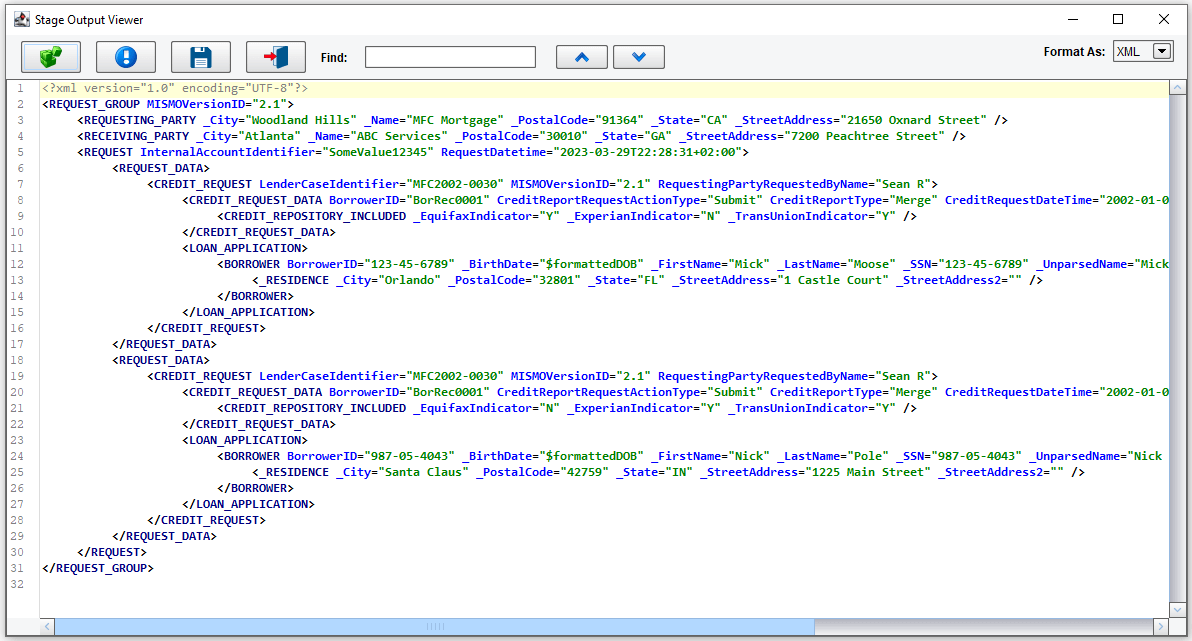eiConsole for MISMO – Quick Tour (Demo)
Welcome to the eiConsole for MISMO product Quick Tour. The MISMO XML standards provide a set of common messaging constructs to support core data exchange processes in the mortgage and lending space. These include residential and commercial standards for processes from loan origination, to appraisal, closing, and servicing. For years, MISMO has streamlined workflow, reduced costs, and improved the transparency of processes across the industry. However, the implementation of standards across heterogeneous systems and entities does not come without challenges and costs. The eiConsole for MISMO has been specifically developed to meet the needs of the MISMO development community. Developers and business analysts can use the features we’ll show you in the next few minutes to implement better, faster, and more cost-effectively than possible with any other tool, or ever before.
The eiConsole for MISMO comes with a set of templates for each of the different MISMO message types.

Building a new interface from one of these templates is as simple as cloning and configuring the new interface.

When working with an interface, the developer or business analyst need only configure the steps between the Source System – producing the data and the Target System – that consumes the data.

Each interface begins with a Listener. A variety of different Listener types support the passive and proactive acquisition of the inbound data from sources such as databases, directories, email, FTP, and Web Services.

After the Listener has been configured Processors can be used. Processors support generic data manipulation of the inbound data stream. This handles things like your decryption and decompression.

Next is your Source Transformation. The data coming into the system is always translated first to XML. This is done through one of the eiConsole’s Transformation Modules.

In particular, you may find the Delimited and Fixed-Width File Transformation Module of use.

Supported by the File Specification Editor, this allows the tool to parse any inbound delimited or fixed-width file into an XML structure.

After data has been converted to XML, the Data Mapper is used to map from one logical format to another. When working with one of the MISMO templates, a prebuilt XSLT is available at your disposal.

This XSLT is manifested as a transaction template. The transaction template allows you to map within the Data Mapper to a pre-populated set of fields in accordance with the MISMO standards.

In using the Data Mapper, we first load a Source Format.

And then drag & drop those values onto the pre-populated MISMO Target format. The result is W3C compliant XSLT.

Once data has been converted into our common format, in this case, the MISMO Credit Reporting standard, we hit the Routing stage. Here, Routing Rules can be used, described in a number of different ways, to determine which Target System or set of systems the data should be sent to.

Once we determine our Target System we have a Target Transformation which may, or may not, be used to further translate the data. The Target Transformation can be used to rationalize different versions of the MISMO standard or take the data from our MISMO canonical format into a proprietary format that can be consumed by our Target system. The same tools that we saw in our Source Transformation, XSLT powered by the Data Mapper, and the Transformation Modules can be used to layout the data however is required by the Target System.

Finally, the Transport component is the mirror image of the Listener. It allows us to configure a Transport Type in accordance with the connectivity protocol that the Target System allows.

This allows us to then send the data either synchronously or asynchronously, batch or realtime, to the Target System which consumes the data.

Once we’re done configuring all of the steps between our Source and Target System, we Save and test our interface within Testing Mode.

Let’s take a look at how this would work with a fully built out Credit Reporting interface.
Here we have a Credit Request being dropped into a Directory in a CSV format.

The Source Transformation uses the File Specification Editor to parse the inbound CSV into an XML structure.

That CSV Structure, now represented as XML, is mapped onto the MISMO Credit Request example in the Data Mapping tool.

It’s then routed to the one Target.

We relay the data along in the Target Transformation.

And finally, we drop the results in a Directory.

In the Testing Mode, we test each of these stages by choosing a starting point and an ending point.

When we click Execute Test we’re prompted for a sample file.

We provide the file, click Open, and as each stage completes we either see a checkmark or an X.

We can now inspect each stage to see the data as it appeared at each point. Here’s our CSV data.

Here it is converted to XML.

Here it is as a MISMO 2.4 Credit Request. So on and so forth.

So you can see just how easy it is for a developer or business analyst to build, deploy, and maintain interfaces using the eiConsole for MISMO. To learn how to do this, take a look at our Getting Started Tutorial.

